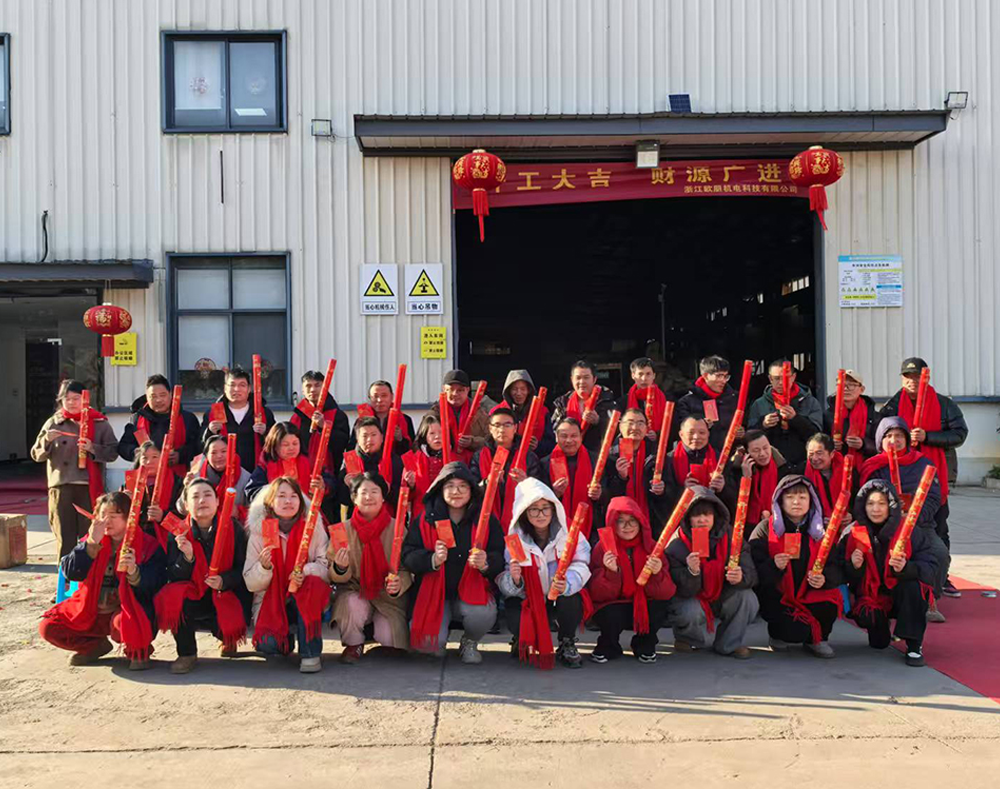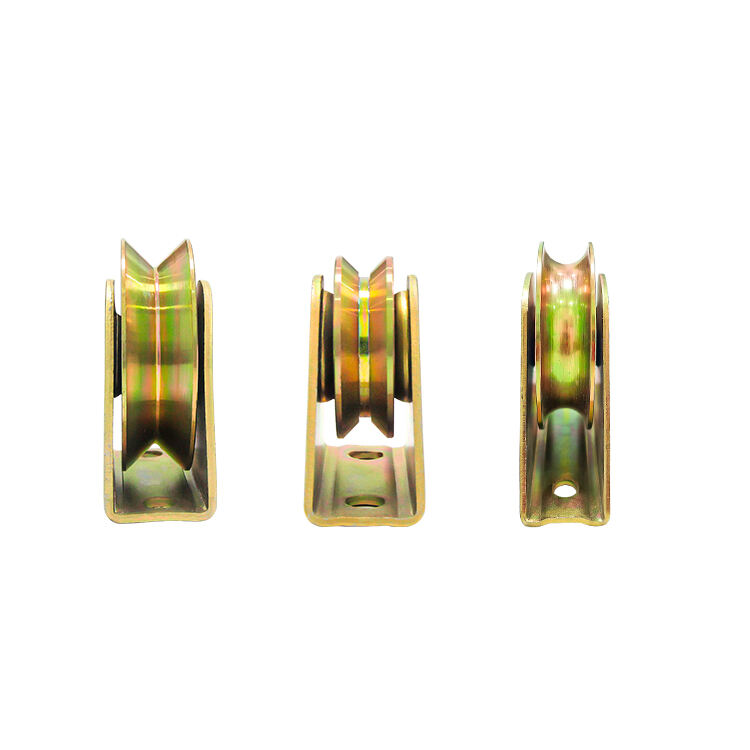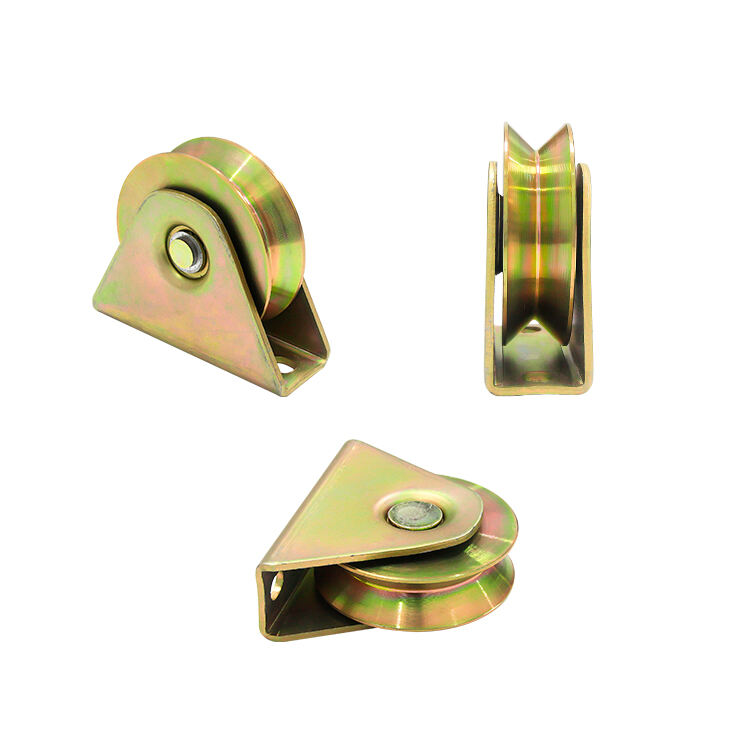সিস্টেমের পারফরম্যান্সে স্লাইডিং গেট রেলের ভূমিকা বোঝা
স্লাইডিং গেট রেল যে কোনও স্লাইডিং গেট সিস্টেমের মেরুদণ্ড হিসাবে কাজ করে, যা সরাসরি অপারেশন নির্ভরযোগ্যতা এবং দীর্ঘায়ুকে প্রভাবিত করে। এই সমালোচনামূলক উপাদানটি তার ওজন বহন করার সময় গেট এর আন্দোলনকে গাইড করে, যা ন্যূনতম ঘর্ষণের সাথে কাঠামোগত অখণ্ডতা ভারসাম্য বজায় রাখতে নির্ভুল প্রকৌশল প্রয়োজন।
কিভাবে স্লাইডিং গেট রেল গেট স্থিতিশীলতা এবং মসৃণ অপারেশন সমর্থন করে
একটি ভাল ডিজাইন করা স্লাইডিং গেট রেল একটি ধারাবাহিক সারিবদ্ধতা নিশ্চিত করে এবং এমনকি ভারী বোঝা অধীনে, পার্শ্বীয় ঝাঁকুনি হ্রাস। এর ইউ-আকৃতির বা আই-বিম প্রোফাইল রোলারগুলিকে একটি নির্দিষ্ট পথ ধরে পরিচালনা করে, চলমান অংশগুলির পোশাককে হ্রাস করে।
তাপ চিকিত্সা করা ইস্পাত বা শক্তিশালী অ্যালুমিনিয়াম রেলগুলি টর্সনাল অনমনীয়তা সরবরাহ করে, বিকৃতি প্রতিরোধ করে যা বাঁধন বা ঝাঁকুনির গতির কারণ হতে পারে। রেলের পৃষ্ঠের সমাপ্তি এবং সহনশীলতার মাত্রা (সাধারণত ± 0.5 মিমি) কম্পন প্রতিরোধের এবং শব্দ স্তর নির্ধারণ করে।
১-২% ঢালের উপর সঠিক রেল ইনস্টলেশন বৃষ্টির প্রাকৃতিক জল স্রাবকে সহজ করে তোলে, ধ্বংসাবশেষ জমা হওয়া যা চলাচলকে হুমকি দেয় তা রোধ করে।
স্লাইডিং গেট সিস্টেমের মূল উপাদান এবং তাদের আন্তঃনির্ভরতা
চারটি প্রধান উপাদান সিস্টেমের কর্মক্ষমতা নির্দেশ করেঃ
- রেল সমাবেশ - সমর্থন পাইর জুড়ে ওজন সমানভাবে বিতরণ করে
- ভি-গ্রুভ রোলার - রেল চ্যানেলের সাথে 3-অক্ষ সমন্বয় বজায় রাখুন
- ড্রাইভ মোটর - টর্ক ওভারলোড প্রতিরোধের জন্য কম ঘর্ষণ রেল পৃষ্ঠ উপর নির্ভর করে
- নিরাপত্তা সেনসর - রেলের সঠিকতা দ্বারা সক্ষম স্থিতিশীল গেট গতির নিদর্শন প্রয়োজন
রেলের মাত্রিক নির্ভুলতা (± 1 মিমি / মিটার) স্বয়ংক্রিয় সিস্টেমে গিয়ার র্যাকের ব্যস্ততার উপর সরাসরি প্রভাব ফেলে। যখন সিলড বল-বেয়ারিং রোলারগুলির সাথে জোড়া হয়, তখন সঠিকভাবে টেনশনে থাকা রেল ভুল সমন্বিত সিস্টেমের তুলনায় মোটর লোডকে 40% পর্যন্ত হ্রাস করে।
ইস্পাত স্লাইডিং গেট রেলসঃ ভারী-ডুয়িং অ্যাপ্লিকেশনগুলির জন্য স্থায়িত্ব এবং কাঠামোগত শক্তি
উচ্চ-লোড এবং শিল্প স্লাইডিং গেট সিস্টেমের জন্য স্টিল কেন আদর্শ
ইস্পাত স্লাইডিং গেট রেলগুলি তাদের অতুলনীয় শক্তি-ওজনের অনুপাত এবং ক্লান্তি প্রতিরোধের কারণে শিল্প অ্যাপ্লিকেশনগুলিতে আধিপত্য বিস্তার করে। অ্যালুমিনিয়ামের তুলনায় প্রায় তিনগুণ বেশি নমনীয়তার মডুলাস সহ, ইস্পাত রেলগুলি 20 টন অতিক্রম করে লোডের অধীনে সারিবদ্ধতা বজায় রাখে।
ERW টিউব এবং স্টিলের কাঠামোগত বিভাগঃ উপকারিতা এবং নকশা বিবেচনা
ইলেকট্রিক রেজিস্ট্যান্স ওয়েল্ড (ইআরডাব্লু) স্টিল টিউব তিনটি মূল সুবিধা প্রদান করেঃ
- দেয়ালের একরূপ বেধ (± 0.004") রোলার পথ অসঙ্গতি প্রতিরোধ করে
- খরচ দক্ষতা : সলিড বারের তুলনায় ২২-৩০% হালকা এবং ৯০% লোড ক্যাপাসিটি বজায় রাখে
- সিল্ডিং ক্ষমতা : সিলের অখণ্ডতা সমর্থনকারী ব্র্যাকেটের জয়েন্টগুলিতে শক্তি বজায় রাখে
ইস্পাত রেলের ক্ষয় প্রতিরোধ এবং রক্ষণাবেক্ষণ
আধুনিক সুরক্ষা ব্যবস্থাগুলি কঠিন পরিবেশে স্টিল রেলের সেবা জীবনকে ২৫ বছরেরও বেশি সময় বাড়িয়ে দেয়:
- গরম-ডুব galvanizing (এইচডিজি): জিংক লেপ দীর্ঘমেয়াদী সুরক্ষা প্রদান করে
- দুই স্তরযুক্ত ইপোক্সি সিস্টেম : ইউভি এবং লবণ স্প্রে এক্সপোজার প্রতিরোধ
- কোরবানির জন্য অ্যানোড কিট : উপকূলীয় অঞ্চলে মরিচা-এর ঝুঁকি হ্রাস করা
মাসিক রক্ষণাবেক্ষণের মধ্যে উচ্চ পরিধান অঞ্চলে সারিবদ্ধতা পরীক্ষা এবং অতিস্বনক বেধ পরীক্ষা অন্তর্ভুক্ত করা উচিত।
অ্যালুমিনিয়াম স্লাইডিং গেট রেলসঃ হালকা ও ক্ষয় প্রতিরোধী সমাধান
আবাসিক এবং উপকূলীয় অ্যাপ্লিকেশনগুলিতে অ্যালুমিনিয়ামের সুবিধা
অ্যালুমিনিয়ামের জারা প্রতিরোধের ক্ষমতা উপকূলীয় পরিবেশের জন্য এটি আদর্শ করে তোলে যেখানে লবণাক্ত বায়ু অবক্ষয় ত্বরান্বিত করে। এর হালকা প্রকৃতি গেট মোটর এবং রোলার উপর চাপ হ্রাস করে।
ইউভি এক্সপোজার, আর্দ্রতা এবং লবণাক্ত বায়ুর অধীনে পারফরম্যান্স
দীর্ঘদিন ধরে ইউভি বিকিরণ বা আর্দ্রতা পরিবর্তনের শিকার হলেও অ্যালুমিনিয়াম কাঠামোগত অখণ্ডতা বজায় রাখে।
ডিজাইন ফ্লেক্সিবিলিটি এবং এস্থেটিক ইন্টিগ্রেশন
অ্যালুমিনিয়ামের নমনীয়তা পাতলা প্রোফাইল এবং বাঁকা ডিজাইনগুলির জন্য অনুমতি দেয়, যা সমসাময়িক বিল্ডিং স্টাইলের সাথে নির্বিঘ্নে সংহতকরণকে সক্ষম করে।
খরচ এবং দীর্ঘমেয়াদী মূল্যঃ ইস্পাত এবং অ্যালুমিনিয়াম তুলনা
প্রাথমিক ব্যয়ের তুলনা
ইস্পাত স্লাইডিং গেট রেল সাধারণত খরচ ৩০-৫০% কম অ্যালুমিনিয়ামের তুলনায়।
জীবনচক্র ব্যয় বিশ্লেষণ
অ্যালুমিনিয়ামের স্থায়িত্ব উচ্চ প্রাথমিক বিনিয়োগ সত্ত্বেও দীর্ঘমেয়াদী মূল্যকে পুনরায় গঠন করেঃ
| খরচ ফ্যাক্টর | স্টিল রেল | অ্যালুমিনিয়াম রেল |
|---|---|---|
| গড় রক্ষণাবেক্ষণ চক্র | 5–7 বছর | ১৫-২০ বছর |
বাজেট ও কর্মক্ষমতা ভারসাম্য বজায় রাখা
ভারী শিল্প পরিবহণের জন্য ইস্পাত এবং উপকূলীয় অঞ্চল বা আবাসিক ব্যবহারের জন্য অ্যালুমিনিয়ামকে অগ্রাধিকার দিন।
সঠিক মATERIAL বাছাই করুন
আবাসিক বনাম বাণিজ্যিক ব্যবহার
- বাসস্থান: ইউভি প্রতিরোধের জন্য পাউডার লেপযুক্ত অ্যালুমিনিয়াম রেল
- বাণিজ্যিক: ভারী বোঝা বহন করার জন্য গরম ডুব দেওয়া জালিত ইস্পাত রেল
ভবিষ্যতের প্রবণতা
উদ্ভবমান কম্পোজিট উপকরণগুলি শক্তি বজায় রেখে ওজন হ্রাসের প্রস্তাব দেয় এবং স্মার্ট গেট সিস্টেমগুলি এখন এমবেডেড সেন্সর সহ আইওটি-সক্ষম রেলগুলি অন্তর্ভুক্ত করে।
এর মধ্যে রয়েছে স্ব-লুব্রিকেটিং লেপ এবং এআই-চালিত পরিধান পূর্বাভাস মডেল।
FAQ বিভাগ
শিল্প ব্যবহারের জন্য ইস্পাত স্লাইড গেট রেলগুলির প্রধান সুবিধা কী?
ইস্পাত স্লাইডিং গেট রেলগুলি তুলনামূলকভাবে শক্তি-ওজনের অনুপাত এবং ক্লান্তি প্রতিরোধের সরবরাহ করে, 20 টন পর্যন্ত ভারী বোঝার অধীনে সারিবদ্ধতা বজায় রাখে। এগুলি উচ্চ লোড এবং শিল্প অ্যাপ্লিকেশনগুলির জন্য আদর্শ।
উপকূলীয় পরিবেশে অ্যালুমিনিয়াম স্টিলের তুলনায় কেমন?
অ্যালুমিনিয়াম ক্ষয় প্রতিরোধী, যা উপকূলীয় পরিবেশের জন্য এটি আদর্শ করে তোলে যেখানে লবণ বায়ু অবক্ষয় ত্বরান্বিত করতে পারে। এটি হালকা, গেট মোটর এবং রোলারগুলির উপর চাপ হ্রাস করে।
রেল ইনস্টলেশনের জন্য কি কি বিবেচনা করা উচিত?
সঠিক রেল ইনস্টলেশনে প্রাকৃতিক বৃষ্টির জলের প্রবাহের জন্য ১-২% ঢাল অন্তর্ভুক্ত করা উচিত, ধ্বংসাবশেষ জমা হওয়া এবং চলাচলকে হ্রাস করা। সিস্টেমের পারফরম্যান্সের জন্য ইনস্টলেশনের নির্ভুলতা অত্যন্ত গুরুত্বপূর্ণ।
ইস্পাত স্লাইডিং গেট রেলের জন্য কী ধরনের রক্ষণাবেক্ষণের প্রয়োজন?
মাসিক রক্ষণাবেক্ষণের মধ্যে উচ্চ পরিধান অঞ্চলে সারিবদ্ধতা পরীক্ষা এবং অতিস্বনক বেধ পরীক্ষা অন্তর্ভুক্ত করা উচিত। গরম ডুব গ্যালভানাইজিং এবং ইপোক্সি লেপগুলির মতো সুরক্ষা ব্যবস্থাগুলি কঠোর পরিবেশে পরিষেবা জীবন বাড়ায়।
সূচিপত্র
- সিস্টেমের পারফরম্যান্সে স্লাইডিং গেট রেলের ভূমিকা বোঝা
- ইস্পাত স্লাইডিং গেট রেলসঃ ভারী-ডুয়িং অ্যাপ্লিকেশনগুলির জন্য স্থায়িত্ব এবং কাঠামোগত শক্তি
- অ্যালুমিনিয়াম স্লাইডিং গেট রেলসঃ হালকা ও ক্ষয় প্রতিরোধী সমাধান
- খরচ এবং দীর্ঘমেয়াদী মূল্যঃ ইস্পাত এবং অ্যালুমিনিয়াম তুলনা
- সঠিক মATERIAL বাছাই করুন
- FAQ বিভাগ




